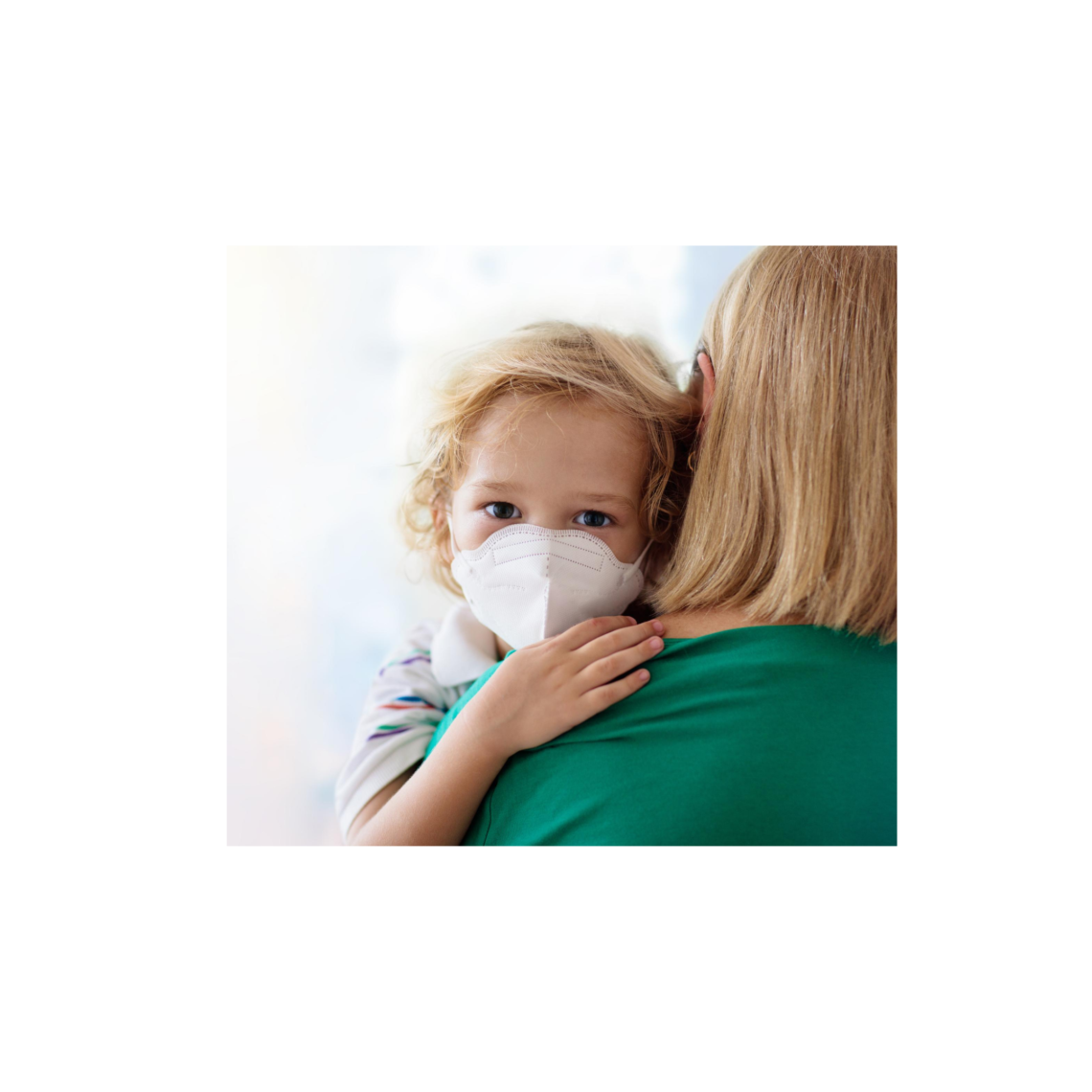
Teaching Children About Face Masks Brings Comfort
Teaching children about face masks ahead of time brings them comfort when they encounter others wearing them and when they must wear one.
*NOTE: This post was written during the first week of May 2020. The content may not pertain to the current and everchanging health and safety mandates.
The first time my two-year-old grandson saw me in a face mask he was unusually quiet. It took him a while to warm up to me.
Whether it’s due to a coronavirus or another health issue, as children venture out, they will encounter people wearing masks.
It’s one thing to see a physician wear one, but it can be perplexing to a young child who sees the store clerk, the pizza delivery guy, and even Grandma wearing a face mask.
Some children don’t like it. Since babyhood, they’ve formed bonds with faces. Even though they recognize her voice, seeing half of Grandma’s face covered can be unsettling. They wait for the peek-a-boo part where Grandma’s smile is revealed. When it is not, some kids find it confusing or upsetting.
And it’s not just adults wearing masks. Some kids wear them, too.
Due to current safety standards, children under the age of two are not to wear a face mask. But older children may have times when they are required to wear them. They may be worn when visiting the elderly or people with compromised immune systems. A mask may be required in certain public settings. Masks may even be mandated in schools.
Whatever the reason, here are some tips to help teach and comfort children about face masks.
Teach Children Why People Wear Face Masks
It’s important to talk about why people wear face masks.
Since germs are not easily seen, we need to explain them differently when speaking to young children.
There are several good children’s books about germs that will help you.
Also, the website, KidsHealth.org, offers a great explanation about the difference between germs, bacteria, and viruses
Simply find a way to relay accurate information in a way your child will understand.
Perhaps explain how germs are so teeny tiny, we can’t normally see them without special equipment, like a microscope.
Germs affect people differently. Some people’s bodies are able to squash the unhealthy germs and not get sick. They have strong immune systems. Other people’s immune systems may not be as strong and they may get sick more easily.
Remind children that when people get sick, they don’t feel well. But, in time, they usually get better on their own, like when we have bad colds.
Other times, we have to go see a doctor who gives us special medicine to help us get well. But occasionally, people get sick and the right medicine to cure them has not yet been discovered.
Masks worn by sick people help keep the sick germs from escaping into the air and possibly making someone else sick. Masks worn by healthy people help keep unhealthy germs out of their mouths and noses.
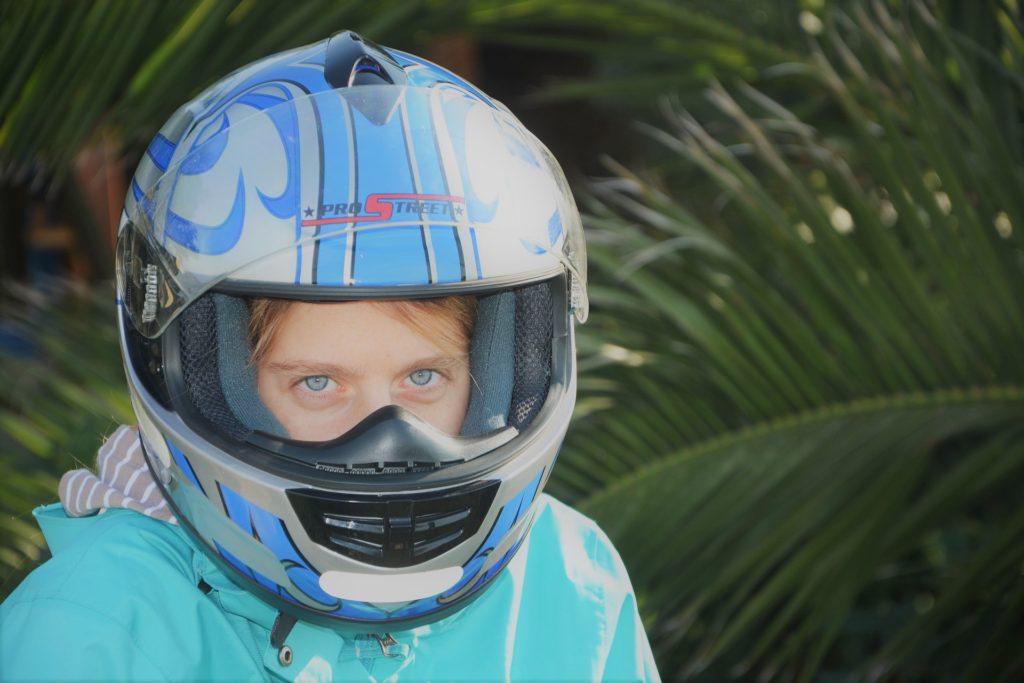
(Pixabay Photo)
Use Comparisons Kids Understand
Talk with your kids using comparisons they understand.
A face mask protecting against germs is like–
-when we wear a coat to block cold air from our bodies.
-or when we carry an umbrella to keep our skin dry.
-a helmet’s face shield worn by a rider on a dirt bike to protect her face from flying debris.
It’s important to note, that like face masks, we don’t need to wear a coat or carry an umbrella all year-round. Many times we’re in an environment where we don’t need to shield our faces for protection.
Also, even when we try to protect ourselves, sometimes a little cold air may seep through our coats, a little spray of rain touches our skin, or a little dirt somehow finds its way through a face shield. The same thing happens with face masks. They don’t prevent all germs from reaching us.
That’s why it is important to be careful when we take off our face masks. We wash our hands first, then we remove the mask touching only the strings or loops. We wash again with soap and water or use hand sanitizer when we aren’t able to wash.
And, it’s important to remind children that if they aren’t feeling well, it’s good manners to keep a distance from healthy people. Sneeze in your elbow, pull your shirt collar up over your mouth when you cough, all those good things.
View, Demonstrate, and Comfort
If possible, allow children to view and touch clean face masks. Demonstrate how to put one on and how to safely remove it.
Allow them to make tiny masks for their dolls, stuffed animals, and action figures. Have them to show their “lovies” how to put on and take off their face masks.
Put masks on several of their lovies and ask them if they can still tell who is who. Mask on. Mask off. It’s still the one they love. This thought may comfort them when they first see friends and family members wearing masks.
I wish I had thought of this before visiting my grandson. If I had it to do over, I would have shown him myself wearing a mask on one of our many Facetime conversations prior to our visit. It may have been less of a shock, if I had shown him earlier how it’s still me behind the mask.
We can teach children about others wearing face masks, but what if the kids don’t want to wear one?
One Successful Tactic
Some children may be hesitant to even try on a face mask.
One mom in Atlanta had a difficult time convincing her three-year-old daughter with cystic fibrosis that she needed to wear a mask to an upcoming doctor’s visit.
Even though she practiced with her dolls, the tactic that sealed the deal was what all parents have used from time to time—bribery.
The toddler was rewarded with a few M&M’s® if she kept her mask on while Mommy counted to ten. They practiced this a few times at home with great success.
On the day of her doctor’s visit, her mother talked with her about who they would see that day wearing a mask like hers. When they arrived at the doctor’s office, she was told she could carry in her own container of M&M’s® if she was wearing her mask. Once inside the examining room, she could take off her mask and eat her M&M’s® and the process would repeat when she was exiting the building. This proved to be a successful method for the toddler.
Ask your children if they would like to try on a face mask. Do they remember how to carefully take it off? Praise them for their efforts. Reward accordingly.
M & M’s are also my grandson’s favorite candy. During the restrictions due to COVID-19, I have been mailing him a mini, fun-size bag each week. Now, he associates me with M & M’s, so they came in handy when I brought some along for our first face-masked visit.
Little gifts and chocolate go a long way at putting folks at ease. 🙂
But, if candy doesn’t appeal to your children, perhaps fashion will.
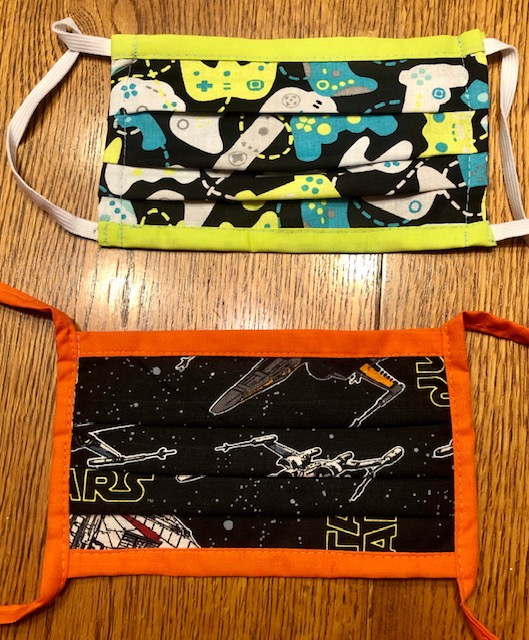
These two masks belong to my teenager. (Photo by Sally Matheny)
Personalize the Masks
I have a feeling due to the COVID-19 pandemic, consumers will soon have a much larger variety of masks to choose from. Your children may be happy with the standard yellow or blue medical face masks.
However, they may enjoy wearing masks a little more if they are able to personalize them.
Disney recently came out with a colorful line of face masks for children. Favorite characters like Winnie the Pooh, Yoda, and of course, Mickey and Minnie Mouse decorate the masks. Disney has donated one million masks to MedShare but they also sell them online.
A helpful list of other places to obtain masks and other types of face coverings for children are listed on Parenting.com.
If you go the DIY route and make your own masks, then allow the children to choose colors and patterns that appeal to them.
One way I got my son to wear a face mask was to get one sporting a gamer motif. We also chose one with a theme from one of his favorite movies.
Some kids draw smiley faces or write words on their masks. Let your children express themselves—just make sure the materials you use are safe for your children.
Choose a Face Shield Instead
If you can’t imagine your three-year-old keeping a mask on for more than a minute, you may want to choose one of the cute safari or bucket hats made with clear, removable face shields. I have seen these on Amazon and Etsy. They may be available at other places.
Teach That This Too Shall Pass
History has taught us that things like this don’t last forever. Reassure your children that sometimes we have to do things we aren’t fond of for a short time until the situation improves. Teach them that this too, shall pass.
Another thing many parents do, is remind their children there are others who are suffering worse things. This may work with older kids better than younger ones. However, it’s important to validate their feelings and not shame them for feeling the way they do.
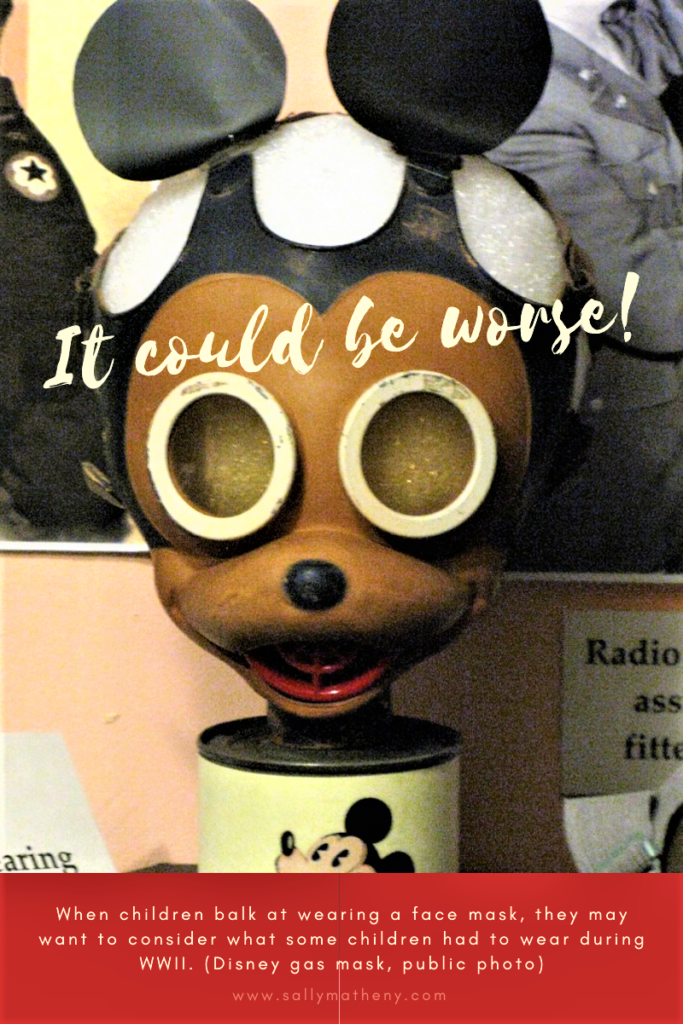
Engage in conversations with your children in such a way they feel safe sharing their fears with you. Pray for wisdom on how to comfort them. We want to encourage and strengthen them, not enable them to live in fear.
It may help to initiate conversations with your older children by sharing with them the CDC’s viewpoint on face masks.
Parents can teach, practice with, and reward children concerning face masks. Knowledge brings understanding and comfort.
Just as important, is when we allow children to witness attitudes and actions that say, “we’re in this together.”
What are your thoughts? What has been your experience with children concerning face masks?



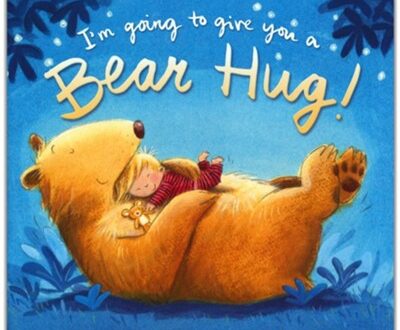

3 Comments
Pingback:
Kate Connects
You shared strategies so we could support our children’s understanding of why we wear masks. That was helpful!
Sally Matheny
Kate, I’m glad you found the suggestions helpful. Thanks for taking a moment to share your thoughts.